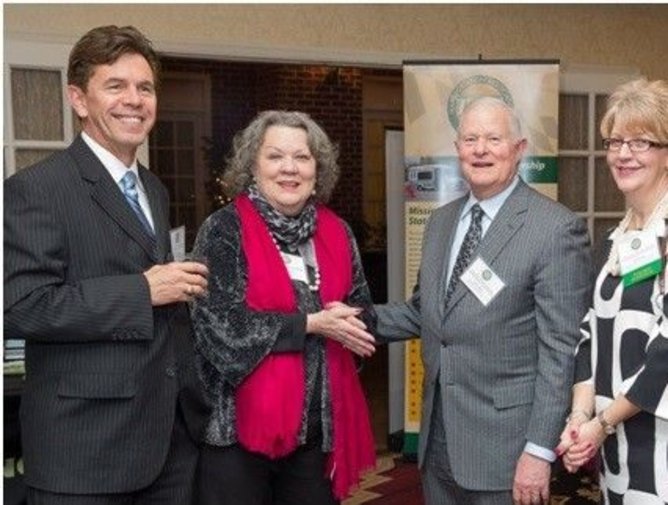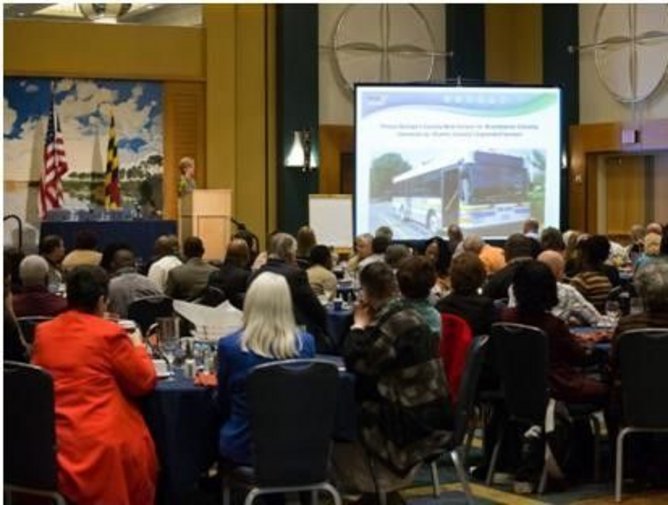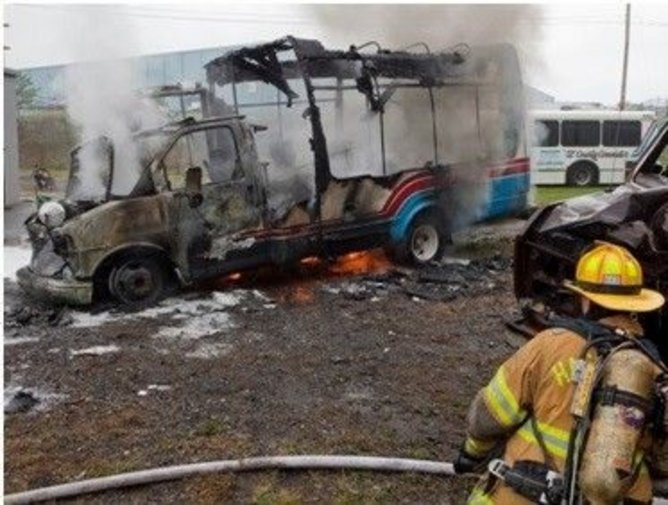
Transportation Association of Maryland: The Pursuit of Excellence in Public Transportation
WHO IS TAM
The Transportation Association of Maryland, Inc. (TAM) is a statewide professional association that is dedicated to improving mobility for all Maryland citizens. TAM is a viable and effective advocate for its members and provides professional development, training, and forums for the pursuit of excellence in public transportation by public, private, and specialized transportation providers.
The Association has come a long way since its beginnings in October 1985 when the first Board President, Jim Raszewski and seventeen founding members formed the Association. TAM incorporated in August 1991and for many years functioned with a volunteer Board and part-time Executive Director who worked from home. At the May 2001 General Membership meeting, membership voted to expand TAM by recruiting to hire a full-time Executive Director and acquiring centrally located office space. In 2003, TAM hired its first full-time Executive Director and Administrative Assistant and opened an office in Ellicott City. Today TAM represents every jurisdiction in the state of Maryland.
TAM’s goals are to be recognized as the leader in transit issues in the State, to be the organization of choice for transit systems, transit vendors, legislators and the public to discuss transportation issues in the State, to be financially independent and to have an active, well-informed membership who considers their membership fee a vital cost of doing business in the transportation industry.
WHY TRANSIT
Public transit enhances mobility for all people. It increases the self-sufficiency and overall quality of life for elderly people and people with disabilities who may be unable to drive, provides alternatives for those who choose not to drive, and connects communities and individuals to jobs, educational, medical and other services. Maryland is served by a network of transportation suppliers that provide public and specialized transportation throughout the state, from the Allegheny Mountains in the west, to the beaches and agricultural areas of the Eastern Shore. Ridership on TAM’s 85+ member organizations provided nearly 364 million passenger trips in FY13 and over 509 million passenger miles to connect Marylanders to jobs, medical services, nutrition programs, educational facilities, and other destinations essential to living well, independently and sustainably. Transportation services throughout the state continue to grow in ridership and service quality.
Businesses in Maryland also continue to rely on public transit services. The availability of transit services enables businesses to recruit and retain employees from a larger pool, which is critical in a competitive and tight labor market. The diverse community transportation services provided by members of TAM link people to community resources and promote business, tourism and economic development throughout the State. Community transportation services come in many forms: traditional city bus services, “demand-response” service arranged on a one-on-one basis, hybrid “flexible” route service, and organized volunteers using their personal vehicles are just a few of the more commonly found services in Maryland. These services are provided and managed through local governments, non-profit human service agencies, private companies, and transit authorities.
MEMBERSHIP DEVELOPMENT AND BENEFITS
As a part of its membership development program TAM has established a number of collaborative partnerships allowing it to offer a select menu of value-added benefits to its membership. Member benefits currently include: Annual Legislative Reception & Transportation Fair; Annual Statewide Roadeo; General Membership Meetings; Annual Conference & Tradeshow; Regional Training Initiatives for Members; and Access to Member Directories and Forums. In addition, via business partnerships, TAM is able to offer discounted products to its members. These partners include Atlas Insurance Agency/Erie; Achieve Links; AFLAC; Exxon Mobil; First Financial Group; Legal Shield; Midas; and Wells Fargo.
INNOVATIONS, OPPORTUNITIES AND ISSUES IN TODAY’S PUBLIC TRANSPORTATION INDUSTRY
Transit Technology
Technology continues to drive the world we live in and the transit industry is no exception. Technological advances include vehicles that operate on alternative fuels (electric buses, hybrids, CNG, “clean diesel”), accessibility equipment which must be installed on vehicles to provide access to people with disabilities, security equipment, and a whole ecosystem of digital communications, automatic vehicle location made possible through global position systems, often referred to as Intelligent Transportation Systems or ITS. In communities where that ITS information is linked into real-time next-bus arrival information systems and web-based technology applications, customers will be able get ready access to updated transit schedule information on their smart phones.
The Importance of Partnerships
Partnerships are essential to innovations and developments in the community transportation industry in Maryland. The Maryland Transit Administration (MTA) of the Maryland Department of Transportation (MDOT), as the provider of federal and state funding to the Locally Operated Transit Systems (LOTS), is a major partner, not only in terms of dollars, but also in the provision of training and technical assistance. Training for the LOTS, MTA grantees, and others is funded through Maryland’s Rural Transit Assistance Program (RTAP). RTAP training is offered in collaboration with TAM, a partner in identifying training needs, hosting, and promoting training events. In recent years MTA and TAM have partnered to raise the level of safety training and emergency preparedness among the LOTS through the TransitSCORE program, which MTA recently redeveloped into a web-based curriculum called MarylandTRAIN.
Meeting the Needs for Specialized Transportation Services
Public transportation providers struggle to meet the needs of specialized transportation for those who are unable to ride traditional bus services due to disabilities, medical conditions, or the effects of aging. Meeting the individualized needs of vulnerable passengers requires significant resources. In Maryland, as in many other states across the nation, meeting the demand for getting people to and from specialized appointments is a concern. Kidney dialysis treatments are a prime example of this type of challenge. The number of dialysis treatment facilities continues to grow, offering opportunities for people with kidney disease to live longer lives; however, resources for public transit services are waning. Recognizing that specialized transportation services are a critical piece of the health care puzzle, the State of Maryland, in collaboration with TAM and other stakeholders, sponsored a study in 2013 to evaluate the growing need and diminishing funding for specialized transportation services.
The Ongoing Funding Challenge
As a public service industry, community transportation relies on tax dollars and grant funding to keep its wheels in motion. While this has always meant resources are constrained, the economic downturn over the past five years has hit our industry hard, with many providers struggling to meet basic community needs for transportation access to jobs, job training, medical care, and other critical services. As the economy has dipped, so have tax revenues and consequently public funding sources.
The Challenges of Maintaining a Public Transportation Workforce
Driver hiring and retention is another ongoing trial for the industry. Driver positions can be difficult at times; drivers deal with traffic, time pressures, and violent and unpleasant passengers on a daily basis. These issues, coupled with funding challenges, lead to relatively low wages and benefits. This makes it difficult to hire and retain skilled public transit drivers when competing with higher paying jobs in transportation. The lack of retention also impacts succession planning. As today’s leaders approach retirement age, preparing to hand over the reins to the next generation involves developing tomorrow’s leaders. To address this issue, TAM is looking at ways to connect younger professionals with veteran leaders.
LEGISLATIVE IMPACTS
Dialysis Transportation Study
In answer to the growing need for specialized transportation mentioned earlier, in 2013 TAM, working in conjunction with a major dialysis treatment provider, successfully initiated a study produced by the MTA regarding the demand for Paratransit services provided by the LOTS for individuals receiving dialysis treatments. The impetus for requesting the study stemmed from recent increases in Paratransit trips provided by TAM members for dialysis patients. The report verified the observations of TAM members and will be used to support future legislation to justify additional funding for Paratransit services that has been flat for the past 10 years as costs and demands have increased.
The MTA contracted with the KFH Group for the completion of the study. KFH Group is a DBE certified woman-owned small business (and TAM member) that offers planning services, technical assistance and training to transit agencies.
Transportation Funding
In 2012 TAM participated on a team of advocates that included the Chamber of Commerce, trade associations and nonprofit organizations that supported the passage of SB 719 & HB 1302, which today provides the Maryland transportation Trust Fund with as much as $664 Million more per year. Without this additional revenue it was unlikely that Maryland would be able to adequately maintain the existing transportation infrastructure and public transportation services.
Public Service Commission
In 2011 TAM was able to win passage of legislation that eliminated duplicate vehicle inspections by the Public Service Commission (PSC) and the Maryland Transit Administration (MTA). The inspections provided by MTA are required by the U.S. Department of Transportation and were more rigorous than those conducted by the PSC. Elimination of the inspections of LOTS vehicles enabled the PSC to reallocate their constrained resources in order to meet the increasing back log of private industry carriers in the State without any fiscal impact to the taxpayer.
TAM is a 501 (c) (3) organization. For more information on TAM please visit www.taminc.org.
Contributions from:
Christina I. Miller, MBA, CCTM, Executive Director
Beth Hamby, Senior Transportation Planner, KFH Group, Inc.
Christopher B. Costello, Public Sector Consulting Group





